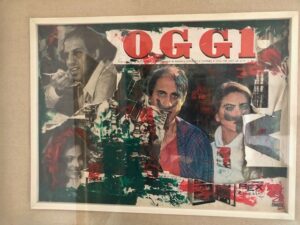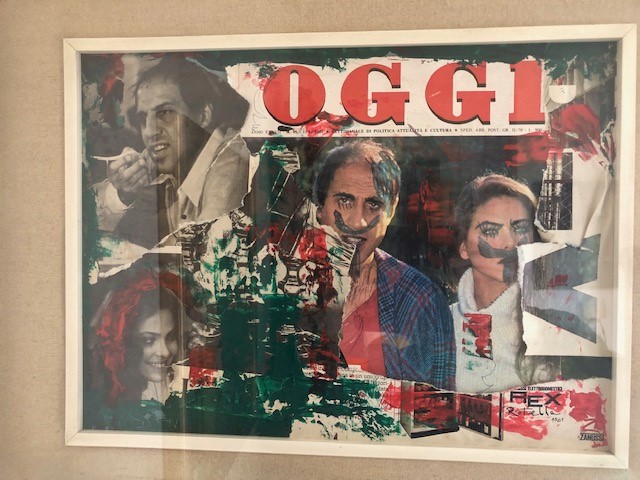Domenico Rotella, décollages and retro d’affiches
Prof. Francesco Carelli

Domenico “Mimmo” Rotella (1918 – 2006) was an Italian artist considered an important figure in post-war European art. Best known for his works of décollage and psychogeographics, made from torn advertising posters. He was associated to the Ultra-Lettrists an offshoot of Lettrism and later was a member of the Nouveau Réalisme, founded in 1960 by the art critic Pierre Restany.
In 1953, he suffered from an artistic crisis, during which interrupts his pictorial production. Now convinced that there is nothing to be done again in art, suddenly what he calls “Zen illumination”: the discovery of the advertising poster as artistic expression of the city. Thus the décollage (early collages) was born: paste on canvas pieces of torn posters of the street, by adopting the collages of the cubists and contaminating it with Dadaist array of ready made. In 1955, in Rome, in the exhibition “actual art exhibition”, he exhibited for the first time the ‘torn poster’. Later, he practiced the so-called double décollage: the poster firstly removed from the billboard, then torn up in his studio. In those years he also made use of the retro d’affiche, using the posters pasted on the side and obtaining non-figurative and monochrome works.
With the Cinecittà series of 1958, select figures and faces of film advertising directing production toward more figurative works. At the end of the Fifties, Rotella, is labeled by critics as a ripper or painter of glued paper. At night, tearing not only posters but also pieces of sheet metal from frames of the billboard zones of the Rome Municipality. The curiosity of the public for the artist’s extravagances, culminated in 1960 with the creation, the work of Enzo Nasso, a short film dedicated to angry Painters, which cure Rotella spoken commentary.
Also in 1960 he joined the New Realism, theorist of which Pierre Restany and bringing together, among others, Yves Klein, Spoerri, , Arman and Christo. The group will also took part in the French Hains, Dufrêne and Villeglé, operating on décollage in the same years, but independently.
Décollages
Décollage is an artistic technique of collage to the opposite procedure. Instead of adding elements of the work, it starts from an artistic object from which the parts are detached. The result was the creation of canvases on which Rotella pasted one or more pieces of torn posters, often superimposed. Rotella wanted to somehow find some form of artistic innovation and at the same time gave artistic dignity to a common object, and of little value removed from its natural environment.
Retro d’affiches
The two roads that Rotella took on simultaneously, starting in 1953-1954 were those of decollage and retro posters. The first retro d’affiche documented back to 1954. Unlike decollage where often textural layers were wrapped together and manipulated, in the back of posters the artist retained the “urban relic”.




